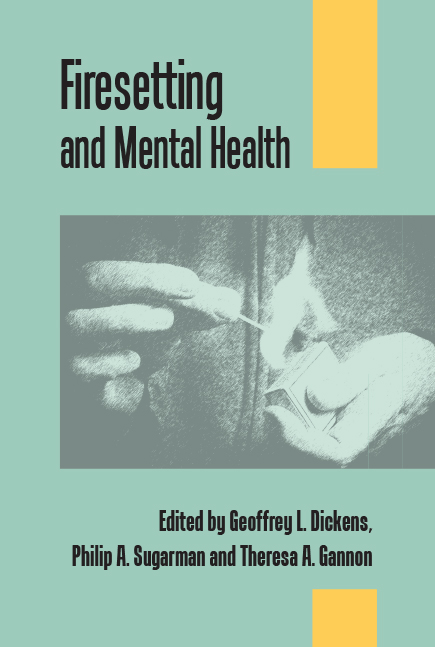Book contents
- Frontmatter
- Contents
- List of figures, tables and boxes
- List of contributors
- Preface
- Part I Theory and research
- Part II Practice and law
- 9 Legal perspectives on arson
- 10 Assessment of firesetters
- 11 Bushfire and wildfire arson: arson risk assessment in the Australian context
- 12 Arson: treatment and interventions
- 13 Arson and mental health: case reports from psychiatric practice
- 14 Fire risk and fire safety in psychiatric care
- Index
11 - Bushfire and wildfire arson: arson risk assessment in the Australian context
from Part II - Practice and law
- Frontmatter
- Contents
- List of figures, tables and boxes
- List of contributors
- Preface
- Part I Theory and research
- Part II Practice and law
- 9 Legal perspectives on arson
- 10 Assessment of firesetters
- 11 Bushfire and wildfire arson: arson risk assessment in the Australian context
- 12 Arson: treatment and interventions
- 13 Arson and mental health: case reports from psychiatric practice
- 14 Fire risk and fire safety in psychiatric care
- Index
Summary
Deliberately lit vegetation fires have the greatest destructive potential of any intentionally lit blaze. The ‘Black Saturday’ bushfires of 7 February 2009 in Victoria, Australia, killed 173 people, injured 414 and destroyed 3500 buildings, including two entire towns (Teague et al, 2010). Even before the fires had abated, police and firefighters revealed that several had been deliberately lit (Silvester, 2009). The subsequent Royal Commission attributed four of the large fires to arson. These four fires caused 52 deaths and burnt approximately 2000 km2 of land, an area slightly larger than that of Greater London (Teague et al, 2010). The community was united in its outrage that anyone would intentionally set a bushfire, particularly on a day with the most severe fire danger rating in over 20 years. The question of why anyone would set such fires is, unfortunately, not easy to answer, as there has been little investigation of those who deliberately light bushfires, especially in Australia. The lack of research in this area is somewhat surprising, given that events like Black Saturday are not uncommon in Australia and other fire-prone regions. The Australian Institute of Criminology estimates that 25 000–30 000 bushfires are deliberately lit in Australia each year (Bryant, 2008). Disaster-level bushfires (those resulting in more than $10 million in damage) cost the Australian economy an annual average of $77 million, even before the associated costs of police and courts and the intangible human and social costs wrought by large fires are considered (Department of Infrastructure, Transport, Regional Development and Local Government, 2001). Estimates from the USA suggest that between 20% and 25% of wildfires are deliberately lit, with rates dependent on location (Federal Emergency Management Agency, 1994; Hall, 1998). Even in the UK, where vegetation fires rarely result in the type of widespread destruction seen elsewhere, it is thought that some 20% of fires in open countryside are the result of arson (Lewis, 1999).
In areas such as south-eastern Australia, where bushfire is a seasonal hazard responsible for significant property loss, there is little tolerance for deliberate firesetting. Public pressure on law-enforcement agencies and government to prevent bushfire arson is becoming increasingly intense.
- Type
- Chapter
- Information
- Firesetting and Mental Health , pp. 206 - 223Publisher: Royal College of PsychiatristsFirst published in: 2017

